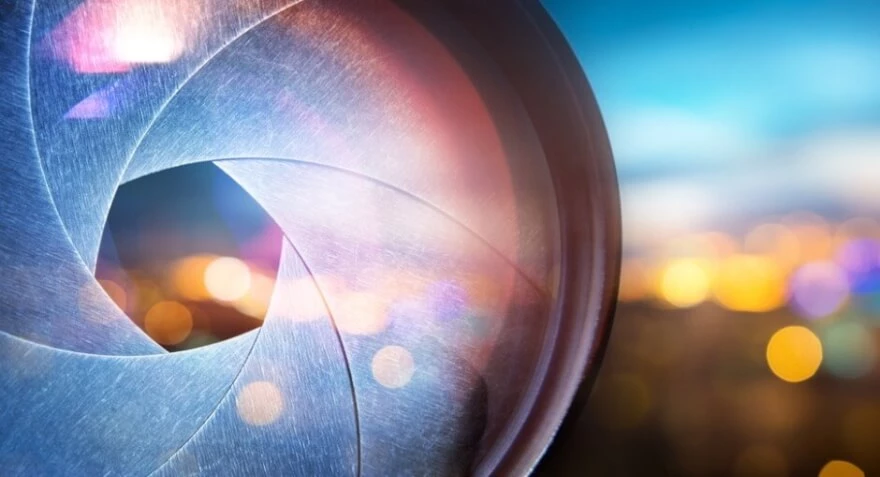What is f-stop in photography?

- What is f-stop in photography?
- Open the simplicity of an F-stop photography definition.
- What are f-stop and double effect?
- What is f-stop on camera?
- What is f-stop diffraction?
- What is f-stop and shutter speed?
- What is f-stop on a lens to change from sharp to bokeh?
- What is f-stop on a lens with AF?
- What are f-stop and ISO exact light transmittance?
- What is the largest f-stop lens?
- What is the best f-stop for portraits?
- Capture landscapes using a particular technique.
Modern digital cameras generally no longer have an aperture ring and allow you to set the aperture to any value, or increase or decrease it by half or third stops. This is equivalent to installing the old-style diaphragm ring between the two full stop markers (some rings had pins in the half feet to help this).
The diaphragm, as a mechanical unit, is a thin, opaque structure with a hole in the center. The role of the diaphragm is to stop light from passing through, except for light passing through its opening. The diaphragm fits inside the lens, and its size adjusts the amount of light passing through the lens. The center of the aperture coincides with the optical axis of the lens system.
The aperture determines how the rays entering the lens collimate, which is important for the appearance in the frame. Collimation is a creation of a thin parallel flow of radiation using the slits through which it passes.
If the aperture is narrow, then highly collimated beams are allowed, which leads to a sharp focus of the image on the plane. A wide aperture transmits uneven beams, resulting in a sharp focus only for beams coming from a certain distance. This means that a wide aperture results in a clear image for things at a certain distance. Aperture also determines how much light reaches the image plane (the smaller the aperture, the darker the image for a given shutter speed).
What is f-stop in photography?

An F-number is a number in the shape of f / 2.0 that determines the size of the aperture opening.
f refers to focal length. f / 2.0 means that the diameter of the aperture opening is equal to the focal length divided by 2.0. f / 4.0 means the opening is equal to the focal length divided by 4.0.This is why if the number on the right is larger, the aperture is smaller. It measures the effective aperture: that is, in a hypothetical single-element lens, the diameter of the equivalent aperture located directly on that lens. In a lens with multiple elements, for technical reasons, the actual aperture may differ to match this.

Open the simplicity of an f-stop photography definition
It was originally called “stop” because the old-style aperture ring “stops” at certain settings, that is, it has marks where the ring stops. These “stops” are specially designed so that each “stop” doubles the amount of light as stops before and after.
Common aperture stops are f / 1.4, f / 2.0, f / 2.8, f / 4.0, f / 5.6, f / 8.0, and so on. The space between two consecutive numbers in this sequence is also called "stop".Even if each number is not double or half of its neighbors, it still allows half of the light of its neighbors to pass through. Thus, this is why the number of-stops is increasing. Of course, 1.4 is not entirely true. Numbers are simply rounded to one digit.

What are f-stop and double effect?
Aperture is measured using an “f-number,” sometimes called an “f-stop,” which indicates the size of the hole diameter. Keep in mind that a lower f-number means a larger aperture, which allows more light to hit the sensor, while a higher f-denominator means less light.
The base number is one. Although there are not so many lenses in the world that can open up to 1, they do exist. Multiplying by 1.4, we get a standard diaphragm row: 1; 1.4; 2; 2.8; 4, etc. each subsequent number indicates that the amount of light passing through the lens has become more or less almost twice.
Understanding how it works is helpful when adjusting exposure and choosing shutter speed and adjusting sensitivity. The difference in the exposure of the frame when opening the aperture from f / 8 to f / 5.6 as when changing the sensitivity from ISO 100 to 200 will be the same. Likewise, you can get a picture one stop lighter if the sensitivity is kept the same, and the exposure is adjusted by shutter speed, changing 1/125 to 1/60 s. And the result will be the same as if the aperture was changed from f / 8 to f / 5.6.

What is f-stop on camera?
Many aspiring photographers are confused by the fact that a small aperture has a larger f (or f / number), while a larger aperture has a small f-number. The thing is that the value is the ratio of the lens exit pupil diameter to its focal length, expressed as a fraction with a numerator equal to one. In photography, instead of one, f is often used, which specifies the purpose of the fraction/ This shows that for different lenses the same aperture value will mean a different diameter. For a 50mm lens, the same aperture will be narrower (50/11) equal to 4.54mm.
Now it is clear that the same amount of light cannot pass through the holes of 9.09 mm and 4.54 mm.

What is f-stop diffraction?
Diffraction is the bending of light rays as they pass along the edge of the aperture blades. Closing the diaphragm increases the diffraction to increase the depth of field, which softens the image, since the rays do not converge to one point on the sensor surface, but are refracted and, therefore, give a soft image. To get a fundamentally clear image across the entire area, pictures usually do not use the lowest possible aperture shooting mode.

What is f-stop and shutter speed?
For most lenses, it is typical that at the maximum aperture it is difficult to achieve maximum sharpness in the frame. As a rule, the diaphragm is slightly covered. The optimal option value for each lens is obtained experimentally. It is necessary to follow the diffraction, at what values of f it will be the minimum acceptable for the photographer, then the aperture value can be considered optimal for work.
Using a sturdy camera tripod is important for testing the lens. The need for this is dictated by the fact that you should focus on the same place. After the test shots are taken, view them at 100% magnification on the monitor screen. You will be able to choose the sharpest and, by checking the EXIF data, determine at what aperture this or that photo was taken.

What is f-stop on a lens to change from sharp to bokeh?
Bokeh refers to an artistic blurry background. Good bokeh is considered to be one that rounds out the highlights of the image rather than leaving the sides of objects that are out of focus sharply defined, for example, forming a clear triangle. Bokeh should be attributed to the properties of the lens, the result of the operation of its optical elements and aperture, and not to the capabilities of the camera with which the shot was taken. The best bokeh is obtained with lenses that have more petals and rounded edges.

What is f-stop on a lens with AF?
It will be enough to know that the wider the angle of the light beams, the more accurate the autofocus will be. In this diagram, the angle of rays from an f / 2.8 lens (blue lines) will be greater than from an f / 4 lens (red lines), which in turn will be larger than from an f / 5.6 lens (yellow lines ). When using a lens with a maximum aperture of f / 8, only the most accurate sensors are capable of working, but focusing will be slow and less accurate. It is for this reason that f / 5.6 lenses stop autofocusing when the photographer tries to use a teleconverter that lowers their maximum aperture.

What are f-stop and ISO exact light transmittance?
Unfortunately, there is no formula that tells us the exact transmittance. If we want to know the exact amount of transmitted light, we must measure it. But this is not a thing you can do at home, it is a meticulous process that requires a lot of input. Some photo studios measure the transmittance themselves, but it is usually not 100% accurate.
Doubling the ISO speed makes it necessary to reduce the exposure by 1 stop. In old cameras, this meant that the photographer installed a film with a higher sensitivity in the camera, and in modern automatic cameras, the sensitivity of the matrix to light is increased.
For example, going from ISO 100 to ISO 200 doubles the sensor's sensitivity, thus, under the same shooting conditions, you should reduce the shutter speed or clamp the aperture by 1 stop. Going from ISO 800 to ISO 400, decreases by 1 stop. Most modern cameras allow you to change ISO in 1-point increments.

What is the largest f-stop lens?
The more elements in the lens, the lower the light transmittance. Each lens element reduces it slightly. For example, zoom lenses have a lower transmittance than fixed focal length lenses.
Much depends on the quality of the glass. Cheaper lenses usually have a poorer quality glass. This means (among other things) that they let in less light than more expensive optics. There are, of course, exceptions. For example, manual focus lenses are not only of very high quality but even have their counterparts in cinema lenses. The quality inside the lens also matters. As a rule, the camera control allows you to stepwise change the f-number value. However, there are lenses with smooth adjustment, and it is becoming more and more common, especially in connection with the development of electronic control of parameters of photographic equipment. A scale of aperture numbers can be applied to the lens barrel, and lenses can have a very convenient solution with aperture control using a special ring (in fact, this is an old solution that came back to us as "new is a well forgotten old" in a fashionable retro design of cameras).

What is the best f-stop for portraits?
Zoom lenses can operate over a wide range of focal lengths, which means they can fall into several categories of this classification at once. For example, there are often zooms (for example, kit lenses with focal lengths 18-55 mm) that work simultaneously in the wide-angle and the “normal” focal length range. And the Nikon AF-S DX 18-300mm F3.5-6.3G type hyper zoom can combine all categories from wide-angle to telephoto focal lengths. But when choosing a lens, do not forget that aperture, the beauty of background blur, and sometimes sharpness is sacrificed for such versatility. Practice the largest and lowest f-stop lenses to get a creative approach and cheat smart technology.

Capture landscapes using a particular technique
In most modern lenses, such scale of numbers are absent and the aperture setting is performed by the controls on the camera itself, special wheels, knobs, buttons, and/or through the menu.
Moreover, physically in modern cameras, as a rule, the so-called "jumping aperture" is used. With such a device, the aperture control is carried out electronically (according to the shooting modes set by the user) and when the photographer is aiming and framing the scene, the aperture is constantly fully open, as much as possible for this lens. As soon as you press the shutter button, the aperture closes to the value set in the settings for the time of the exposed picture, and immediately after it opens again as much as possible. That is as if it is a "jumping effect". This is done so that when shooting with a very closed diaphragm, you can at least see something in the viewfinder, being very dark.
He started his career as a professional photo designer and retoucher. Professional commercial photographer with 20 years of experience. He is a leading advertising photographer and has worked as a food photographer with Michelin-starred chefs. His work with models can be seen on the calendars of many leading companies in Ukraine. He was the owner of the photo studio and photo school "Happy Duck".

with RetouchMe














